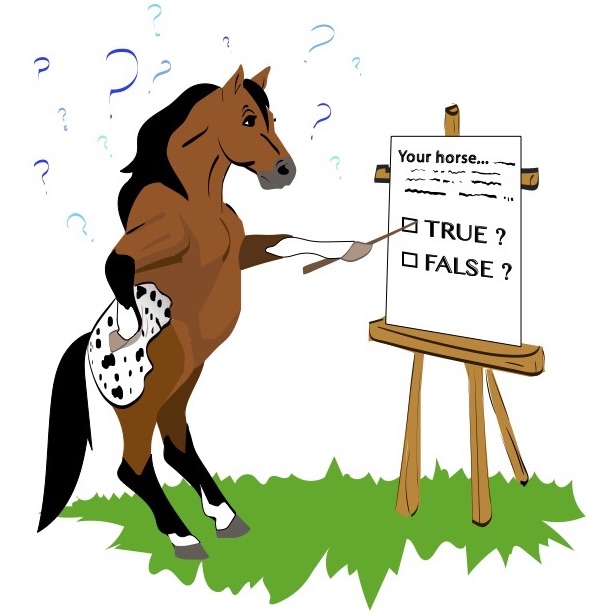
1. True or false: To cue your horse to lope slowly, you should keep a firm contact with his mouth as you ask for the lope depart.
T / F
2. To maintain the correct upper-body posture during a lope depart, you should think…
A) “suck tummy in.”
B) “lean back.”
C) “shoulders forward.”
3. True or false: Your poor position at the lope can cause your horse to get crooked and/or break down into that super-fast, bouncy trot.
T / F
4. True or false: To keep your horse calm during a lope depart, you should hold your breath momentarily as you cue for the lope.
T / F
HOW’D YOU DO? (Answers below.)
Products we feature have been selected by our editorial staff. If you make a purchase using the links included, we may earn a commission. For more information click here.
1. F is correct. As you ask for the depart and for the first few strides into it, you must give your horse his head completely so he can lope. Tension or uncertainly can cause you to keep hold of the reins, which is saying, in essence, “Please lope—no! Don’t lope!” This frustrates and confuses a horse. Trust him to strike off on a draped rein.
[HERE’S HELP: Key strategies for confident lope departs.]
2. B is correct. Many riders lean forward into a lope depart. Counter this tendency and maintain an erect posture simply by thinking “lean back” at the moment of the depart. Don’t actually lean; just imagine you’re sitting in your favorite recliner and are about to push it back. This keeps your bottom sitting down in the saddle where it belongs, and your shoulders over your center of balance—instead of coming forward.
3. T is correct. How effective you are at the lope has mostly to do with how you’re sitting it, and whether your body is relaxed and correctly following your horse’s motion. A few lessons on the longe line, with an expert eye to correct your position flaws, can make a world of difference.
4. F is correct. Actually, it’s important to keep breathing. The best technique is to take a deep breath as you prepare to lope, then exhale slowly as you ask for the depart. In general, steady “belly breathing” (into your abdomen) promotes a feeling of calm for both you and your horse.
[READ: More tips for successful, confident loping.]
Don’t miss out! If you’re not already receiving H&R’s fun and informative newsletter, sign up right now for The Ride. It’s *free*!






